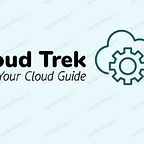The End of an Era: CentOS 7 Reaches End of Life
As of June 30, 2024, CentOS 7, the widely-used enterprise operating system, has reached its End of Life (EOL). This marks a significant change for many organizations that have relied on CentOS 7 for their server workloads over the past decade. Here’s what you need to know and how to prepare for this transition.
What Does EOL Mean for CentOS 7 Users?
When CentOS 7 reaches EOL, it will no longer receive updates, bug fixes, or security patches from the CentOS Project. This leaves systems running CentOS 7 vulnerable to security threats and operational issues. Without these crucial updates, continuing to use CentOS 7 can expose your organization to significant risks.
Why is CentOS 7 Being Discontinued?
In 2020, the CentOS Project announced a strategic shift to focus on CentOS Stream, the upstream development platform for Red Hat Enterprise Linux (RHEL). This decision means that CentOS Linux versions, including CentOS 7, will be phased out, culminating in the end-of-life status of CentOS 7 in 2024 (The world’s open source leader) (The world’s open source leader).
Migration Options
For those currently using CentOS 7, planning and executing a migration strategy is critical. Here are some recommended paths:
- Transition to Red Hat Enterprise Linux (RHEL): Given that CentOS is derived from RHEL, this is the most straightforward migration path. Red Hat provides tools and resources to help ease the transition, including in-place conversion tools to migrate CentOS 7 systems to RHEL 7 with minimal disruption.
- Explore Other Linux Distributions: Organizations may also consider other enterprise-grade Linux distributions, such as Ubuntu or SUSE Linux Enterprise Server (SLES), depending on their specific needs and existing infrastructure.
- Consider CentOS Stream: For some use cases, CentOS Stream may be a viable option. However, it is essential to understand that CentOS Stream serves as a rolling release, upstream of RHEL, and may not be suitable for all production environments.
Preparing for Migration
Migrating from CentOS 7 requires careful planning and execution. Here are some steps to help ensure a smooth transition:
- Assessment and Inventory: Evaluate your current CentOS 7 deployments, including applications, workloads, and dependencies.
- Compatibility Check: Ensure that your applications and workloads are compatible with the new operating system.
- Testing: Perform thorough testing in a staging environment before rolling out changes to production.
- Training and Documentation: Provide training for your IT staff on the new system and update documentation to reflect changes.
Conclusion
The end of support for CentOS 7 is a critical milestone that requires proactive action. By planning your migration strategy now, you can ensure a smooth transition and maintain the security and stability of your IT infrastructure. Whether you choose to migrate to RHEL, explore other Linux distributions, or consider CentOS Stream, the key is to act now to avoid potential disruptions.
For more detailed guidance and resources on migrating from CentOS 7, visit the Red Hat blog here (The world’s open source leader).
